How Geoff Eyre has restored the UK’s precious uplands with a mastery of invention
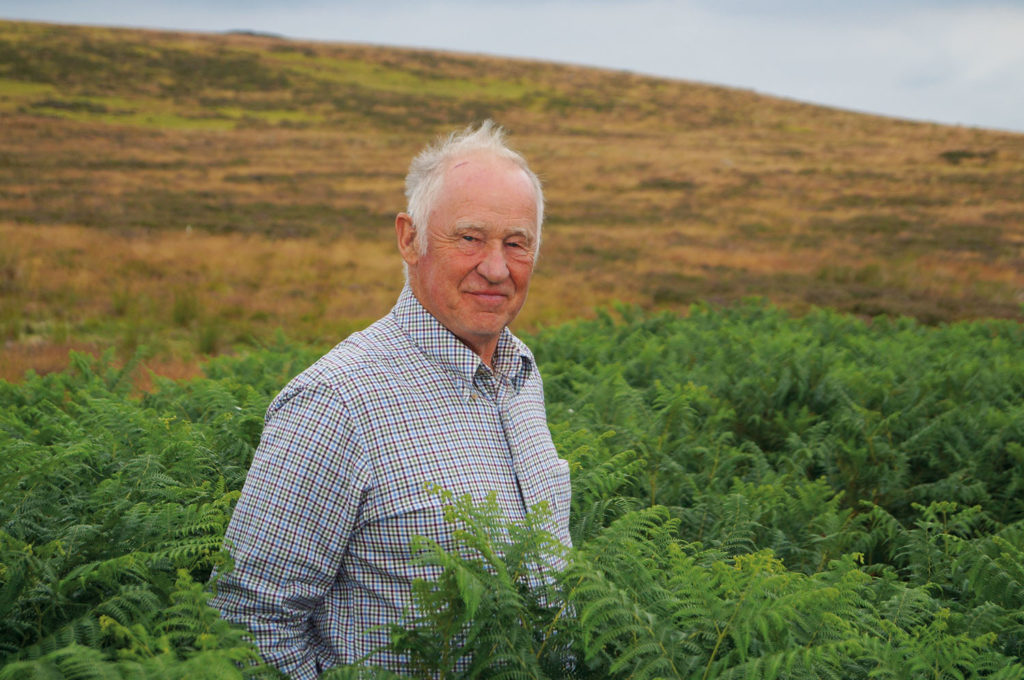
Geoff Eyre likens his moorland restoration work to gardening on a grand scale. Over 30 years he has pioneered methods of collecting the seeds of upland native plants and sowing them, single-handedly restoring more than 40 square miles of wild moorland to its former glory. This has been mostly done in his ‘spare time’ alongside running his 200 acres of farmland, the 1,000 acres of grouse moor he bought in 2012, and the family business, an agricultural merchants, which has been operating in Brough in Derbyshire’s Peak District since 1885. Growing up in the stunning surroundings of the Hope Valley, he developed a passion for wildlife: “I love being out on the moor. From a very early age I’d be off for hours of adventures on the hills.”
Estate facts
- Location: Derbyshire
- Type of farming: Sheep and arable
- Acreage: 1,200
- Funding grants: Walling Grant
After the war, the drive for food security meant many of the Peak District’s privately owned moors were sold to local farmers and cleared for agriculture and forestry. During this period, more than 20 per cent of England’s historic heather moorland was lost. The National Trust (NT) became a big landowner in the park in the 1950s, and in the late 1980s there was a call for moorland flora to be restored, backed by public funding in the form of MAFF and Joint Nature Conservation Committee’s Environmentally Sensitive Areas programme. Geoff rose to the challenge, setting to work on 5,000 acres across the Peak District, including the National Trust’s Howden Moor, on which he still rents the shooting rights.
He said: “In one case, what is now the United Utilities company asked for help with a large area of bare peat damaged by wildfire. The soil was too acid for anything to grow so we dropped lime on the area by helicopter and then, as a trial, we sowed strips of everything from turnips to sunflowers. I planted fast-growing rye grass in one area and no one believed it would work, but within a few weeks there was a patch of bright green like a lawn on the hill. People said you shouldn’t grow grass on the moor, but it was to establish a soil structure for the heather to follow and it worked.”
A self-taught engineer and inventor, Geoff applied the same principles to moorland restoration as you would to agriculture. By adapting existing agricultural machinery, he developed a special harvester, which even incorporates discs normally used to separate pizza trays that pre-clean the seed. Once cut, the heather is processed at Geoff’s farm supplies business where a series of custom-built machines separate the seeds. After discovering that fire stimulates heather germination, Geoff extracted a liquid chemical from heather smoke using water-cooled radiators acting as condensers. The seed treated with the extract went from 5 to 80 per cent germination. In all, Geoff has managed to cultivate 40 different moorland plants, including the microscopic spores of sphagnum moss, and was awarded an honorary doctorate by Liverpool University for his work.
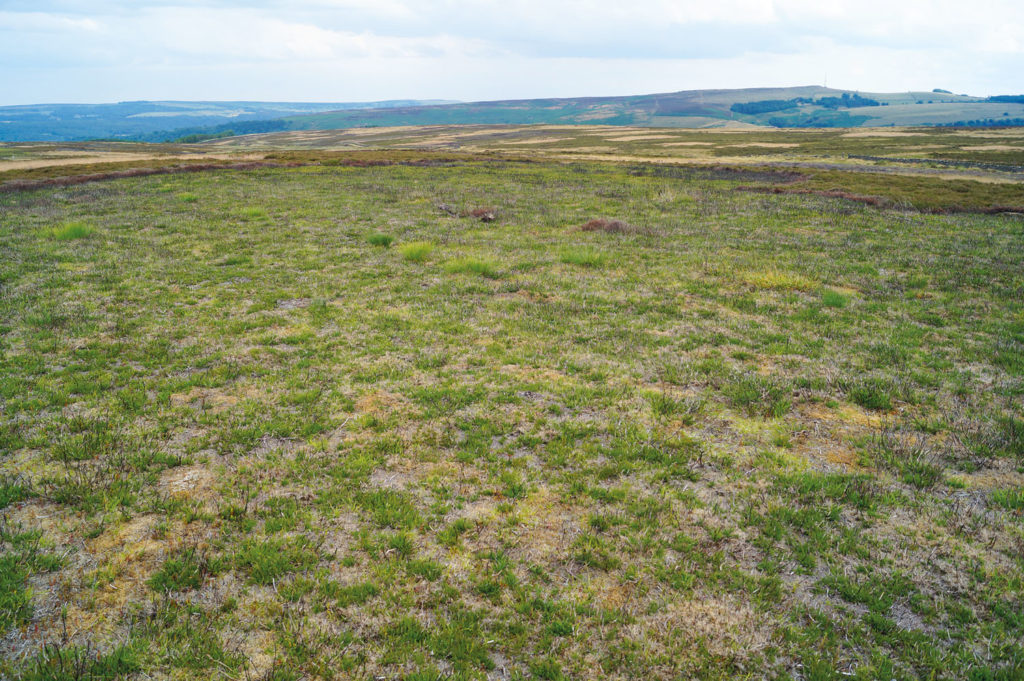
Gathering the seed is only the start of the process; getting it to establish is another challenge. Geoff has applied a deep understanding of moorland ecology and agronomy learned from years of practical experience to develop a range of fascinating techniques, from harvesting sorrel seed on the hill with a Flymo to covering clay pellets in sphagnum spores so they can be cast using a fertilizer spreader.
To establish a seedbed, herbicide is used to clear monocultures of molinia grass, or bracken, which provides little in the way of habitat, is inedible to livestock and produces carcinogenic spores. Geoff then scatters the seed, a mix of plants such as heather, cotton grass, bilberries, crowberry, native cranberry and deschampsia grass. He has also discovered that certain plants make good pioneer species by forming a platform for others. For example, deschampsia protects young heather from extremes of weather while it gets a foothold and sphagnum provides an ideal bed for berry species, while sheep sorrell works well after bracken.
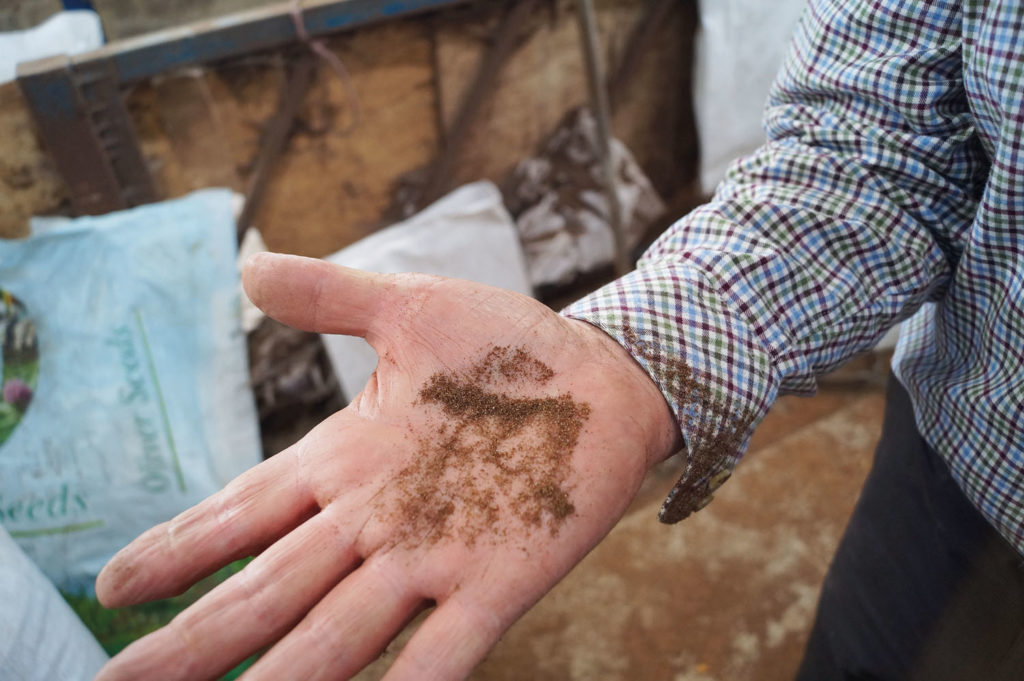
The results are spectacular. Vast expanses where barren swathes of bracken or molinia grass held sway are transformed into colourful mixes of different hues of heather, varieties of grasses and the magical sight of red and blue berries growing through the extraordinary sponge-like structure of the sphagnum.
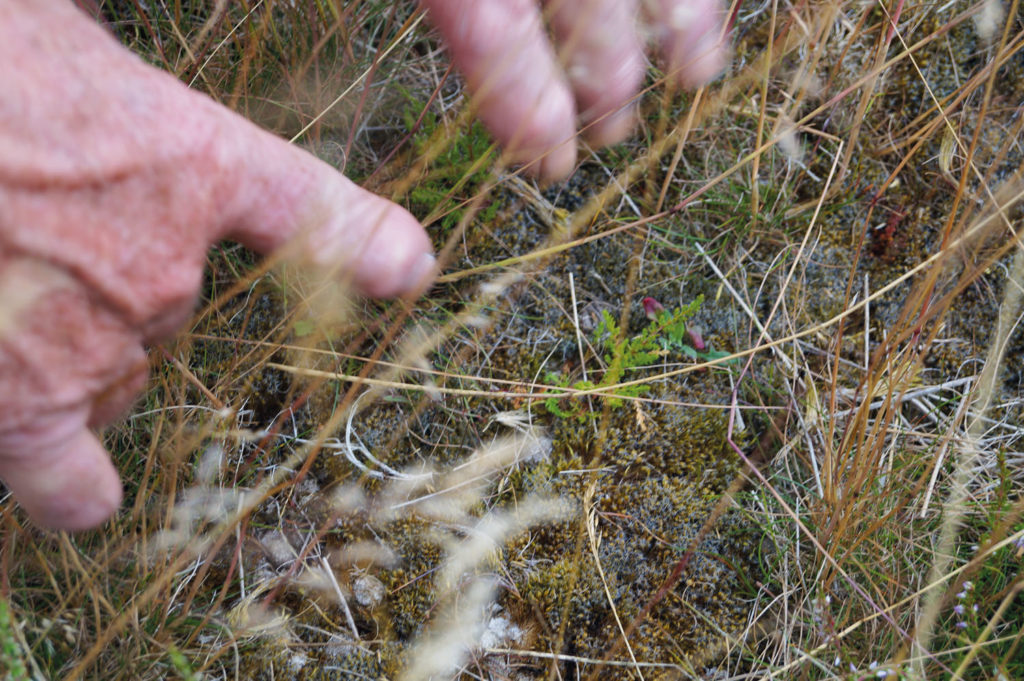
Once the habitat is restored, the wildlife returns with insects, reptiles and many of our most loved and threatened birds including curlew, ring ouzels, lapwings, skylarks, dunlins and golden plover in abundance. On one 1,500-acre piece of restored moorland, in 11 years bird counts went from six to 1,000 with the highest density of lapwings in the area, 38 pairs of ring ouzels, 69 pairs of curlew and good numbers of white hares as well as several species of birds of prey.
The work of maintaining habitat for specialist moorland birds continues through grazing regimes. In the 1980s, headage payments led to overgrazing and a lot of heather was destroyed. Today, the number of sheep on Peak District moorlands has been reduced by two thirds, but it is a delicate balance and Geoff feels it may have gone too far the other way. He said: “The reduction in sheep is a concern, as grazing helped create natural firebreaks and good nesting areas for rare birds.” The ancient stone walls that criss-cross the Peak District are to keep the sheep in, and on his own moor Geoff employs a stonewaller, who is restoring these important parts of Derbyshire’s rural heritage.
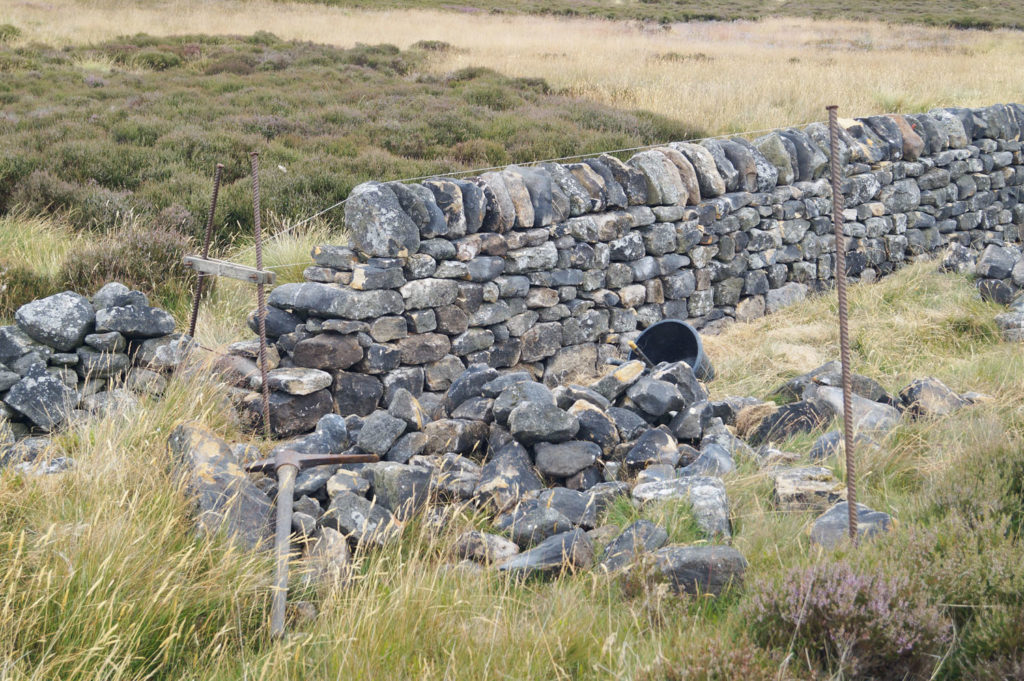
As well as grazing, the other key management technique is controlled burning or muirburn, which rejuvenates the heather and other plants, including peat-forming Sphagnum moss. Geoff said: “In my experience, Sphagnum only spores after fire, allowing it to recolonise large areas and eventually form carbon-capturing peat.”
By burning between October and April when the earth is damp and cold, grouse moor managers avoid fire getting into the underlying peat or soil and destroying the heather they are trying to preserve. About 30 years ago, Geoff developed a variation of this method known as ‘cool burn’, which enabled burning earlier in the year when it’s wetter and so safer. Cool burn involves cutting a fire break strip around a small patch of older heather and getting a line of fire to travel across without spreading beyond the edges. This technique results in regrowth of heather from root stock in the first year and is now used on most of the UK’s grouse moors.
He said: “To demonstrate how effective it is, I bury a Mars bar at ground level. The burn goes over in a matter of seconds, singeing off the heather without even burning the wrapper or melting the chocolate, so you can imagine that the peat and mosses underneath the heather remain unharmed.”
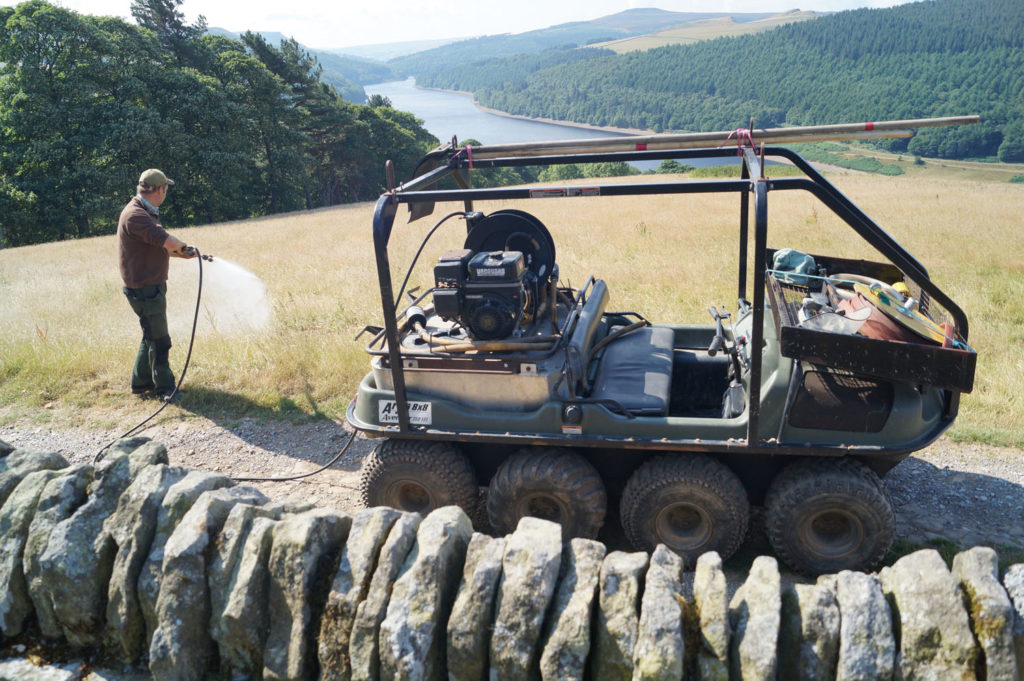
This form of burning is not only controllable; it also creates a series of firebreaks across the moor, which will be vital as the threat of wildfires grows. In addition, the ATVs that gamekeepers have specially adapted for managing cool burn can be employed in the event of a wildfire when normal fire engines are not capable of getting onto the moor or have to clock off at night due to safety regulations. For this reason, Geoff is concerned the current reduction in a careful muirburn regime in the national park could lead to devastating fires in the future.
He said: “In 1993, four local grouse moors were designated SSSIs because of the wildlife produced by the management system. Natural England (NE) recognised the benefits it brought. Since then it seems NE and the National Parks Authority have moved away from grouse management and there is a danger that all the work will be undone, putting wildlife at risk.”
Conservation in numbers
- 40 square miles of moorland restored
- 40 upland plants cultivated
- 69 pairs of curlew
- 38 pairs of ring ouzels
The 1992 Rio Convention on Biodiversity ratified the global importance of UK heather moorland. Its open vistas, stunning colours and unique wildlife are much loved the world over. In the future, Geoff hopes grouse managers like him will again be encouraged in their efforts to maintain this precious habitat and the threatened species that depend on it. In the meantime, he is looking forward to restoring more of the moorland plants and repairing the stone walls on his own moor.
His advice to fellow conservationists: “Like gardening, you have to like solving problems and be prepared to persevere!”
This case study is taken from our book Moorland Conservationists, available here for just £3.99.
